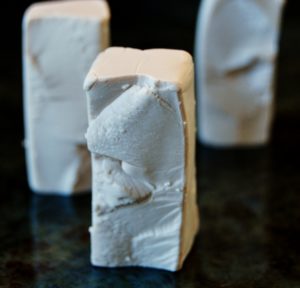 As a youth coach, I start every season visualizing each player as a piece of clay. Why clay? Clay can be shaped and molded. It can be flat as a pancake or long and skinny like a pencil. It can be rolled into a ball or formed into a square. In fact, clay can become almost any shape you can image. The amazing thing about sculpting clay is there is no waste. No matter what you create, you can use every bit of the clay you have.
As a youth coach, I start every season visualizing each player as a piece of clay. Why clay? Clay can be shaped and molded. It can be flat as a pancake or long and skinny like a pencil. It can be rolled into a ball or formed into a square. In fact, clay can become almost any shape you can image. The amazing thing about sculpting clay is there is no waste. No matter what you create, you can use every bit of the clay you have.
Sculpting clay is a gentle process, yet takes strength. Clay can be firm at first and sometimes downright hard, but becomes softer and moldable with effort. Clay is forgiving and resilient, yet clearly shows the impressions you make on it.
Here is the same paragraph with a few words replaced.
Coaching kids is a gentle process, yet takes strength. Kids can be firm at first and sometimes downright hard, but become softer and coachable with effort. Kids are forgiving and resilient, yet clearly show the impressions you make on them.
As a child grows up, he or she will develop habits and beliefs that are the direct result of impressions made by coaches and other influential people in his or her life. However, age has a funny way of limiting one’s ability and/or desire to change. Older kids, AKA “adults”, become more like stone than clay when it comes to learning new concepts and adjusting personal views. I’m not saying that you can’t teach an old dog a new trick. In fact, the self-improvement market is currently estimated to be more than $13 billion per year! That adds up to a lot of adults trying hard to improve themselves.
Stone is not a worthless and unworkable material. Many of the world’s greatest works of art were chiseled out of stone. A skilled artist can turn stone into a magnificent sculpture. The glaring difference between sculpting clay and carving stone is not the final product; it is the waste created by chiseling away the excess stone to release the beauty hidden inside. The unyielding nature of stone requires great force to chip away the unwanted stone. All too often, learning a new trick starts with unlearning an old one and can prove to be a painful process. This process can literally feel like cold steel carving right through you.
Kids harden as they grow up. It’s a natural and required process to become adults of conviction. As a youth coach, I know that I am leaving an impression on my players which will contribute to the beliefs that will shape them. The impression I leave will be either good or bad because it is impossible to leave no impression at all. Therefore, I intentionally leave the best possible impression I can on every child I coach.
This analogy does not apply exclusively to youth coaches. Most adults will find themselves, either intentionally or unintentionally, in an influential position with kids. How will you respond when those little eyes are looking up at you and the clay is in your hands?